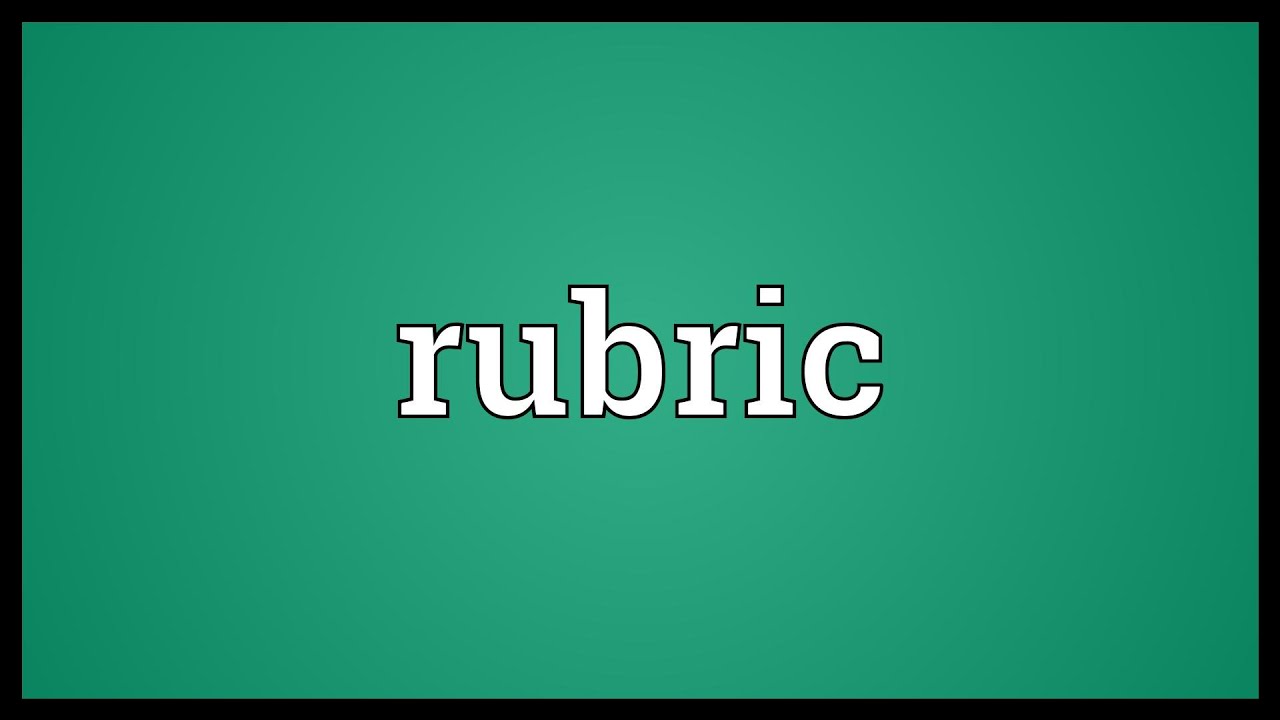What is a Rubric?
A rubric is a scoring guide that enables the teacher to make reliable judgments about students’ work and allows students to self-assess.
Elements of rubric
- Criteria
- Level of performance
- Description
Criteria
- It is one or more traits or dimensions that serve as the basis for judging the student’s response.
- Definitions and examples to clarify the meaning of each trait or dimension.
Level of performance
A scale of values on which to rate each dimension
Descriptors
Spell out what is expected of students at each level of performance for each criterion
Guidelines for developing rubrics
- Identify the qualities and attributes that the teacher wishes to observe in students’ outputs that would demonstrate their level of proficiency.
- Decide what type of rubric to use, whether analytical or holistic.
- Identify and define the standards of excellence for the lowest level of performance.
- Test whether the scoring rubrics is ‘reliable’ by asking two or more teachers to score the same set of projects of outputs and correlate their individual assessments.
Tips for developing rubrics
- Talk with colleagues
- Gather sample rubrics
- Keep it short and simple (ideally, the entire rubric should fit on one sheet of paper)
- Each rubric item should focus on a different skill
- Focus on how students develop and express their learning
- Begin with describing the highest (or lowest) level
- Avoid odd numbers in the rating scale
Types of Rubrics
• Criterion-based Performance Lists
• Holistic Rubrics
• Analytic Trait Rubrics
Criterion-based Performance Lists
- List the criteria, elements, or traits of a performance
- May have point values assigned to each item on the list
- Do not contain a detailed description of the performance levels
- May be judged using Yes or No
Example: What is a Rubric
You are a restaurant critic who has been assigned the task of evaluating your waitperson. With a partner (or as a group) design a checklist of qualities upon which you would judge a waitperson’s performance.
Criterion-based Performance Checklist
| Yes | No | |
| Promptly greets patron | □ | |
| Attentive to patron’s needs | □ | |
| Courteous | □ | □ |
| Friendly, but not overly so | □ | |
| Delivers the food while still hot | □ | |
| Gets the order right | □ | |
| Calculates the check correctly | □ |
Holistic Rubric
- Provides an overall impression of a student’s work
- Yields a single score for a product or performance
- Is well-suited to judging simple products or performances
- Does not provide a detailed analysis of the strengths and weaknesses
Example: a case
The editor of the restaurant magazine is not satisfied with the checklist and has asked you to create a holistic rubric with which to give the waitperson a score from 3 to 1. Take the criterion-based performance checklist and use it to help you determine the levels in your holistic rubric.
| 3 | The waitperson greets patrons promptly and is courteous and friendly, but not overly so. He/she takes the order accurately and serves the food while it is still hot. He/she is attentive to the patron’s needs and calculates the bill correctly. |
| 2 | The waitperson is not quite as prompt or courteous. He/she may be unfriendly or overly so. He/she may forget minor parts of the patron’s order or serve the food slightly cool. He/she neglects the patrons or miscalculates the bill. |
| 1 | The waitperson is not prompt. He/she is rude or unconcerned with the patron’s needs. He/she gets the order wrong or makes the patrons wait. Many mistakes are made in the bill. |
Analytic-Trait Rubric
- Divide the product or performance into distinct traits and judge each separately
- Is better suited to judging complex performances involving several dimensions
- Provide more specific information or feedback
- Helps students better understand what quality of work is expected.
- Is more time-consuming to learn and apply
Example: a case
After seeing your evaluation of his wait staff in the magazine, the owner of the restaurant asks you to design an analytic-trait rubric by which he can assess his people. Use the information from your checklist and from your holistic rubric to create this assessment.
Analytic-Trait Rubric
| Greeting 10% | Attentiveness 15% | Service 60% | Billing 15% | |
| 3 | The waitperson greets patrons promptly. | The waitperson is attentive to the patron’s needs. | The waitperson takes the order accurately and serves food promptly. | The waitperson calculates the bill accurately. |
| 2 | The waitperson lets patrons sit for a few minutes before greeting them. | The waitperson is somewhat attentive to the patron’s needs. | The waitperson makes a minor mistake in the order or does not serve food promptly. | The waitperson makes a minor mistake in the bill. |
| 1 | The waitperson lets patrons sit for several minutes before greeting them. | The waitperson totally ignores the needs and requests of patrons. | The waitperson gets the order wrong or serves the food cold or both. | The waitperson completely miscalculates the bill. |
Remember
The rubric that you choose to use must assess what you set out to assess.
Align your goals and your assessment for a true picture of what the student can do.
Show the rubric to the students BEFORE they start to work on the product or performance.
